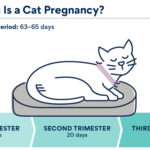Key Takeaways:
- Lilies pose a severe threat to cats; they are lethally toxic.
- The Lilium genus of plants, including popular varieties like Easter lilies, contains toxins harmful to cat kidneys.
- Even minimal ingestion of certain lily types constitutes a veterinary emergency. Prompt treatment is crucial for a positive outcome.
- Avoid lilies in your home and garden if you have feline companions.
- Immediate veterinary attention is necessary if you suspect your cat has interacted with any part of a lily.
Lilies are incredibly dangerous for cats, representing a life-threatening toxicity. The severity is such that even a small nibble of a lily leaf, petal, or even the pollen, can lead to fatal kidney failure in cats. Astonishingly, even water from a vase holding cut lilies can be toxic if ingested by a cat. The precise toxin in lilies that affects cats remains unidentified, and uniquely, this toxicity is specific to felines. While dogs might experience stomach upset from ingesting lilies, they do not suffer kidney failure like cats.
The danger stems from the Lilium plant genus, with all members containing substances toxic to cat kidneys. However, certain varieties are particularly hazardous, notably Easter lilies (Lilium longiflorum), Stargazer lilies (Lilium ‘Stargazer’ hybrid), and Asiatic lilies (Lilium asiaticum). It’s important to also be aware of daylilies (Hemerocallis genus), which, while not true lilies, are also toxic to cats and can cause kidney failure. Other plants commonly called lilies, such as calla lilies and peace lilies, are not part of the Lilium genus and do not cause kidney failure in cats, but they can still be harmful and cause irritation. Lily of the valley (Convallaria majalis), another plant with “lily” in its name but unrelated to true lilies, poses a different threat, potentially causing heart problems like irregular heartbeat and low blood pressure in cats, which can lead to seizures or coma.
Individual cats can react differently to lily toxicity. Some seem more vulnerable than others, and the extent of kidney damage varies. While some cats might recover with minimal intervention, others require intensive care, including dialysis, to survive long enough for potential kidney repair. Tragically, many cats suffer irreversible kidney damage from Cat Lily poisoning, leading to death or euthanasia within days of showing symptoms. If you suspect your cat has ingested any part of a lily, immediate veterinary intervention is critical.
Alt text: Close-up of a white Easter lily flower, highlighting its petals and stamen, to illustrate the plant toxic to cats.
Recognizing the Clinical Signs of Lily Toxicity in Cats
The initial symptoms of lily poisoning in cats are typically vomiting, lethargy, excessive drooling, and a decreased appetite. Within 12 to 24 hours post-ingestion, signs of kidney damage may appear, including increased urination and dehydration. As the toxicity progresses and kidney function deteriorates, a critical stage is reached when urine production ceases. This represents a life-threatening emergency. Without timely and appropriate treatment, kidney failure from cat lily poisoning can be fatal within 36 to 72 hours.
Diagnosing Lily Toxicity in Cats
Diagnosis of lily toxicity in cats often relies on identifying evidence of plant ingestion. This could involve finding chewed lily plant parts, discovering plant material in the cat’s vomit, or knowing that a cat exhibiting kidney failure has had access to lilies. Veterinary evaluation of kidney function involves blood and urine tests. Bringing the suspected plant, or a photograph of it, to the vet clinic can significantly aid in accurate diagnosis, but ensure the plant itself is kept away from the cat.
Treatment Strategies for Lily Toxicity in Cats
If recent ingestion (within a few hours) is suspected and the cat hasn’t already vomited, inducing vomiting might be the first step to remove plant material from the stomach. Activated charcoal may be administered to bind any remaining toxins in the digestive system. Intravenous (IV) fluid therapy is crucial to support kidney function and help flush out circulating toxins, protecting the kidneys. Urine output will be carefully monitored. In severe cases of cat lily poisoning, dialysis may become necessary to sustain the cat’s life while hoping for kidney recovery.
Prognosis for Cats with Lily Toxicity
The outcome for lily toxicity in cats is variable and heavily dependent on the timeliness of treatment. If treatment is delayed beyond 18 hours after ingestion, the likelihood of irreversible kidney failure significantly increases, leading to a poorer prognosis. Early and aggressive veterinary intervention offers the best chance of recovery.
Prevention of Lily Toxicity in Cats
The most effective way to protect cats from lily toxicity is prevention. Avoid bringing lilies, especially the dangerous Lilium varieties, into your home if you have cats. Similarly, refrain from planting these lilies in your garden if your cats or neighborhood cats have outdoor access. Creating a lily-free environment is the best strategy to ensure your cat’s safety from cat lily poisoning.
Further Resources:
- UC Davis Veterinarians Warn of Lethal Toxicity of Lilies
- UC Davis, 10 Garden Plants That Are Toxic to Pets
- UC Davis Center for Companion Animal Health – Beware: pets and toxic plants
- UC Davis School of Veterinary Medicine Toxic Plant Garden
*This article may not be reproduced without the written consent of the UC Davis School of Veterinary Medicine.

